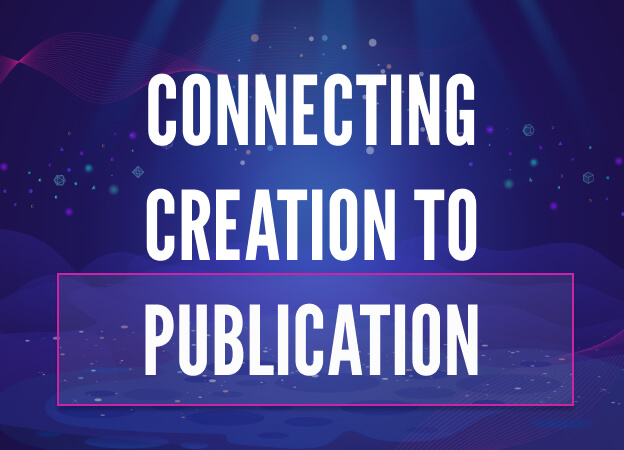New Variants Will Even Further Stretch our Workflows
The adaptive survivors have realized fundamental changes are necessary, and have gotten to work. It’s time to realize that nothing will change for the better unless we change it ourselves.
Everything Is About to Change, Again
So, we already have a lot to manage. But now new significant content elements are emerging that will further challenge content supply chains:
-
Augmented reality (AR) and virtual reality (VR)
-
Voice, chatbots, and other conversational touchpoints
-
Expanded personalization and adaptive experiences
Each new content dimension impacts content schemas, semantic standards, our content operating model, and our content supply chain design. When content process happens by accident instead of by design, each new content dimension just adds to the mess and overwhelms.
The Ways We Create and Manage Content Has to Change
Writers are often spending greater than 50% of their time on the mechanics of content, instead of the content itself.
This encumbers authors, making them far less productive than their potential. Due to the amount of manual effort involved, the world is currently operating under “brute force” content management. We build the same content topic in multiple, different ways, and no single team is responsible for omnichannel programs throughout an enterprise.
Everyone is still struggling with the move from a page-centric ecosystem to an intelligent modular content ecosystem, with omnichannel content molecules. As a result, we are facing massive technical debt in the form of misconfigured and out-of-date content systems, and massive content debt in the form of unstructured, duplicated, metadata-starved content sets. Hiding from these changes doesn’t make them go away, although many organizations make a policy of ignoring innovation until competitive pressures force change. Meanwhile, the debt grows and content sets atrophy.
Working Within a New Framework Towards Content-as-a-Service
To achieve our goals of overcoming sluggish content, we aim to align structural standards using a Core Content Model™, managed separately from content and separately from systems of record. When we adopt standards into our structural standards, including DITA XML, schema.org, and industry-specific standards, we make it easier to address heterogenous content sets moving around within one enterprise ecosystem. All of these standards, when expressed in software and data systems, create flow throughout the publishing lifecycle, with the goals to shape content to deliver via content-as-a-service (CaaS) APIs to infinite end points.
Now is the time to empower content. Our collective future hinges on the free movement of knowledge, connected to context. We need to evolve from single use, “disposable” content to “durable,” simultaneous use content, and from heavy-handed governance to responsive and collaborative orchestration.
Facing the Reality of the Content Tsunami
A standard schema-management approach, or Core Content Model™, must be employed as the most stable foundation we can use to build a future-flexible content supply chain. Structural and semantics standards, when they exist, can then adapt to incorporate new content shapes like AR, voice, and segment-based personalization.
Time for Action
In summary, if we are to prepare for a more flexible future, which includes AR and conversational user experiences within a personalized environment, we need to start dealing with the fundamental patterns and underpinnings of our content; and, we must not address these things as separate "new technology" projects.
Every time that we take a “technology first” mindset and buy new tech without paying attention to content structure and semantics, we split the soul of content into new schemas, new taxonomies separated from existing content sets.
We can each face the problem and start working towards solutions in our own way, at whatever level. Content intelligence can and does have origins at a departmental level. Individuals have huge influence when equipped with vision and data. Bridge-builders between content silos gain recognition and often move upwards in the organization.
We can start by changing our mindset about who we are and what we do. We’re not just creating documentation, we're generating onboarding and training experiences from the knowledge set. Those experiences lead directly to customer retention and affect the bottom line. C-level stakeholders (and budget keepers) must be informed of content’s real value for customer experience, strategic nimbleness, and overall market value.
Some actions we can take include:
-
Find others that care about content and form a content club. Describe the problems in writing, brainstorm ideas and solutions, learn from webinars, articles, and books.
-
Start to quantify the problem. Track what it actually takes to produce content in all stages.
-
Start inventories of content assets:
-
Expressions and renderings
-
Customer experiences or journeys
-
Exemplars of that content
-
Customer types and segments
-
-
Find ways to streamline content workflows, improving author experience.
-
Hack together some starting content diagrams:
-
Identify content types and their relationships.
-
Create an inventory.
-
Start content modeling.
-
-
Share and organize semantics:
-
Even if only via a shared spreadsheet, we need to agree on terminology (what we call things) and how we tag things.
-
Make basic, centralized taxonomies. Share with one new group at a time.
-
-
Finally, look for all opportunities to build bridges. Bridge builders are the new power brokers.
So, let’s shed our fears. Embrace the opportunity of new platforms by pouring new content into structures that connect with the rest of our overall publishing lifecycle and strategic goals for customer experience.
Start with the desired end in mind. Begin with a systems mindset. Start with a flexible content model built on top of solid content strategy.



